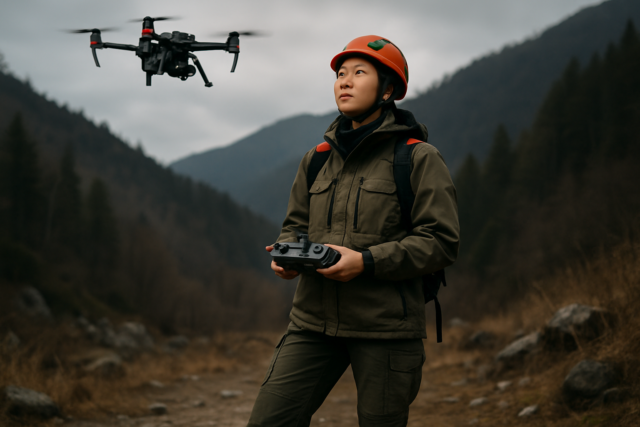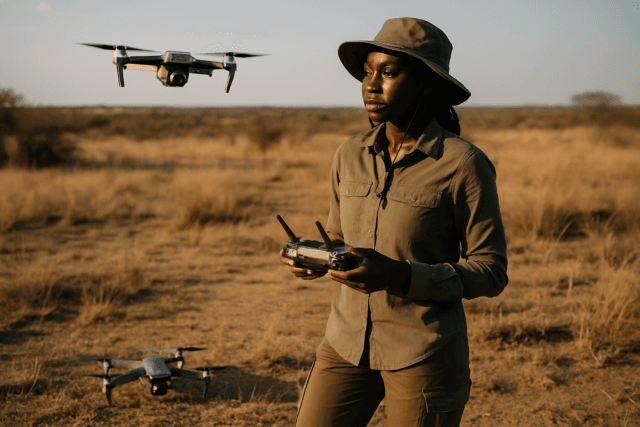The increasing integration of Unmanned Aerial Systems (UAS), or drones, into Search and Rescue (SAR) operations has revolutionized emergency response, offering unparalleled efficiency in locating missing persons, assessing disaster zones, and coordinating relief efforts. However, this critical capability also introduces significant challenges regarding data privacy and security. As drones equipped with high-resolution cameras, thermal sensors, and other advanced payloads gather vast amounts of sensitive information, SAR organizations must implement robust best practices to protect individual privacy and maintain public trust.
Why Data Privacy is Paramount in SAR Drone Operations
Drones in SAR operations often capture sensitive information that can include high-resolution imagery of private properties, identifiable individuals, thermal signatures, and even biometric or geolocation data. This incidental capture of private spaces and personal information creates what experts call the “drone privacy paradox,” where invaluable benefits for society are balanced against the potential for intrusion. In disaster-stricken or emergency areas, drones might inadvertently record vulnerable individuals, injured persons receiving medical attention, or grieving families, raising serious ethical dilemmas about data control, storage, and potential misuse. Protecting this data is crucial to prevent unauthorized access, breaches, and erosion of public confidence.
Navigating the Legal and Regulatory Landscape
Drone operations are subject to a complex web of laws and regulations, which can vary significantly by region and nation. SAR teams must be acutely aware of these frameworks to ensure compliance.
International and National Data Protection Laws
- General Data Protection Regulation (GDPR): Applicable in the European Union, GDPR governs the processing of personal data. If drone operations capture identifiable individuals through images, videos, or other information, SAR teams are subject to GDPR rules. Key requirements include obtaining consent where practicable, informing individuals of data collection, securing data, and limiting data use to the stated purpose. Failure to comply can result in substantial fines.
- Health Insurance Portability and Accountability Act (HIPAA): In the United States, HIPAA mandates national standards for protecting individuals’ electronic Protected Health Information (ePHI). While not always directly specific to drones, if SAR operations involve collecting health-related data (e.g., identifying injured individuals with specific conditions), HIPAA’s administrative, physical, and technical safeguards for confidentiality, integrity, and security become highly relevant.
- Federal Aviation Administration (FAA) Regulations: In the U.S., the FAA primarily focuses on aviation safety, setting guidelines for commercial drone use such as pilot certification, altitude limits, and airspace restrictions. While not directly addressing privacy, these operational rules can indirectly impact the likelihood of capturing sensitive details.
- State and Local Laws: Beyond federal regulations, many states and municipalities have enacted their own drone laws, often addressing privacy concerns like requirements for property owner consent or restrictions near private properties.
Core Legal Principles
Regardless of specific legislation, general legal and ethical principles emphasize transparency, accountability, and the establishment of clear guidelines for data collection, storage, and sharing. Organizations should work with legal counsel to confirm authority to operate drones for their intended purpose and ensure compliance with applicable laws.
Technical Safeguards for Drone Data Security
Implementing robust technical safeguards is fundamental to protecting drone data throughout its lifecycle—from collection to storage and transmission.
Encryption: The Cornerstone of Data Protection
- End-to-End Encryption: All data transmitted between the drone, ground control station (GCS), and cloud storage should be encrypted using strong protocols like Advanced Encryption Standard (AES-128 or AES-256), Transport Layer Security (TLS), Secure Shell (SSH), or Virtual Private Networks (VPNs). This prevents unauthorized interception.
- Encryption at Rest: Data stored on the drone’s onboard memory, removable storage devices (e.g., SD cards), local servers, and cloud environments must also be encrypted. Effective key management, with encryption keys stored separately from the encrypted data, is critical.
Secure Access Control
- Role-Based Access Control (RBAC): Implement RBAC to ensure that only authorized personnel can access sensitive drone data, limiting access based on their roles and responsibilities within the SAR team.
- Multi-Factor Authentication (MFA): Add an extra layer of security by requiring multiple verification steps for access to drone systems, data repositories, and GCS software.
Software and Hardware Security
- Regular Updates: Consistently update drone firmware and software to address vulnerabilities and improve security features. Download updates only from authenticated, secure vendor websites.
- Physical Security: Protect drones and their data storage devices from physical threats like theft or tampering. This includes secure storage facilities and access controls for equipment.
- Separate Data Storage: When possible, store flight data separately from the manufacturer’s native flight logs to enhance privacy and security, preventing unauthorized access if native systems are compromised.
- Geofencing: Utilize geofencing features to restrict drone operations in sensitive or no-fly zones, reducing the chance of accidental privacy violations.
Operational Best Practices for Privacy in SAR
Technical solutions must be complemented by clear operational procedures and a strong ethical framework.
Data Minimization and Purpose Limitation
- Collect Only What’s Necessary: Adhere to the principle of data minimization by collecting only the data essential for the SAR mission’s legitimate purpose. Avoid gratuitous data collection.
- Data Retention Policies: Establish strict, clear, and justifiable data retention policies. Data should only be kept for as long as necessary for the SAR operation, investigations, or legal requirements, and then securely disposed of.
Transparency and Consent
- Prior Notice: Where practicable and safe for the mission, make a reasonable effort to provide prior notice to individuals about drone operations and potential data collection, especially in areas with a reasonable expectation of privacy. This could involve public announcements or visible signage.
- Informed Consent: If identifiable personal data is intentionally collected, obtain explicit and informed consent from individuals, especially when flying over private property.
- Anonymization: Implement techniques to anonymize or de-identify personal data, such as blurring faces or obscuring private spaces, whenever the data is not critical for the mission’s purpose or before public disclosure.
Training and Accountability
- Comprehensive Training: Provide all personnel involved in drone operations with thorough training on data security, privacy best practices, ethical considerations, and relevant regulations.
- Written Policies: Develop clear, written security and privacy policies that cover data collection, use, storage, dissemination, and breach response. These policies should be regularly reviewed and updated.
- Oversight and Reporting: Establish clear accountability mechanisms, including oversight bodies and procedures for reporting suspected misuse or security incidents.
Ethical Considerations in Drone Use for SAR
Beyond legal compliance, SAR organizations must grapple with the ethical implications of using drones. The ability of drones to access previously private spaces necessitates a conscious effort to respect individual rights. This includes:
- Balancing Public Good vs. Individual Privacy: While drones offer immense benefits in saving lives, their deployment must be weighed against individuals’ reasonable expectations of privacy in both public and private spaces.
- Avoiding Surveillance Overreach: Drones should be used solely for legitimate SAR purposes, not for mass surveillance or activities unrelated to the mission.
- Minimizing Distress: Operators should be mindful that drone presence, especially with advanced sensors, can be intrusive or distressing to individuals in vulnerable situations.
Conclusion
The integration of drones into Search and Rescue operations is an invaluable advancement, offering capabilities that save lives and enhance situational awareness. However, this power comes with a profound responsibility to protect data privacy and ensure robust security. By adopting a comprehensive strategy encompassing strong technical safeguards, adherence to legal and regulatory frameworks, rigorous operational best practices, and a steadfast commitment to ethical considerations, SAR organizations can harness the full potential of drones while upholding public trust and respecting individual rights.





